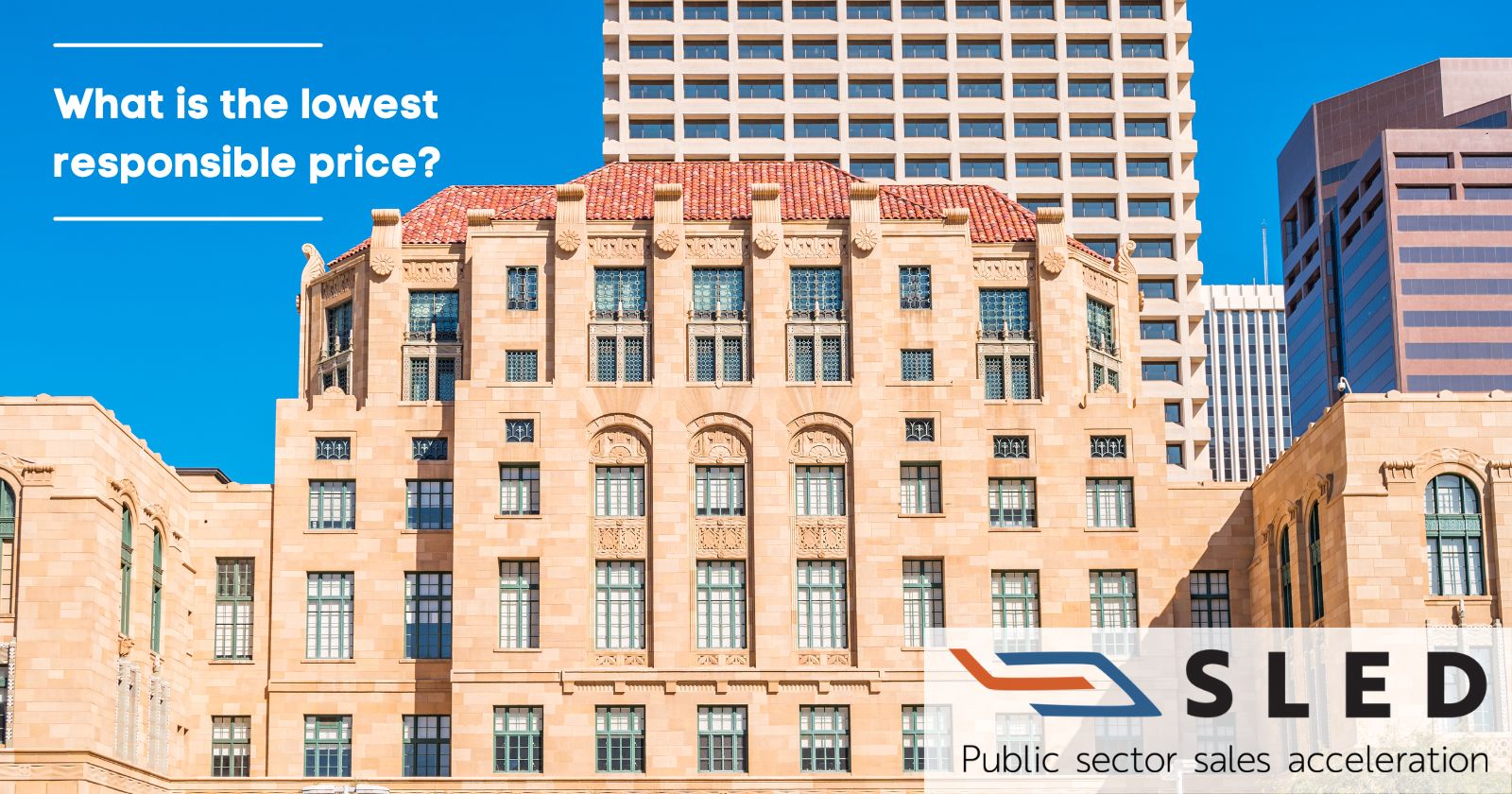
Lowest Responsible Bid: A Key Factor in Winning SLED Contracts
There’s a common misconception that SLED contracts always go for the lowest bidder, but that simply isn’t true.
Who do government buyers really choose? Usually the vendor with the lowest responsible bid.
In this post we’ll explain why B2G sales don’t always go to the lowest bidder … and how you can use that information to your advantage to land lucrative SLED contracts.
Do we have to offer the lowest bid?
Short answer: No. Your bid needs to be competitive with others, but you do not have to offer the lowest price to win a SLED contract.
Why is that? Aren’t government buyers supposed to stretch their budgets and save tax payer dollars?
There’s some truth to that, but government buyers don’t want to be get stuck with a low-quality vendor just because they’re low-cost.
In fact, protection against lowest price is often baked into state, city, and county RFPs.
That protection is usually in the form of a CYA statement that says, essentially, that the buyer will consider the “lowest responsible price” or “lowest responsible bid”.
What makes a bid responsible?
Most government RFPs outline considerations for ranking respondents. That helps defines what they mean by “responsible”.
Typically those considerations include intangibles like expertise and track record. B2G buyers want to ensure that the vendor is actually capable of performing the service, has adequate experience, is trustworthy, and won’t be terrible to work with.
It’s likely that they also have requirements around employment diversity, information security, accounting practices, insurance, and more.
Interestingly, a price that’s too low can be a disqualifying factor all on its own. If you sell a commodified product or service, your buyer probably has a sense for what it costs to complete that work. If your bid is too low, your buyer may recognize that you won’t actually be able to successfully provide the service.
Keep your price low and competitive.
Now, just because you meet all the intangible considerations doesn’t mean you’re going to win the contract. You price still has to be competitive.
Although there’s money to spend (from $750 billion in California down to under $20 billion in smaller states like Delaware or Wyoming), it’s rationed pretty carefully. If the price for your product or service doesn’t fit the SLED entity’s spending agenda, you won’t win the contract.
So, does your bid have to be lowest? Not at all. Instead, you bid must be competitive AND responsible.
The lowest responsible price is the one that wins.
How to submit the lowest responsible bid.
There’s an art to deciphering government RFPs and crafting a response that includes a bid that’s both low and responsible.
We can help. In as little as two weeks, we can answer your questions about SLED contracting through a SLED Opportunity Profile.